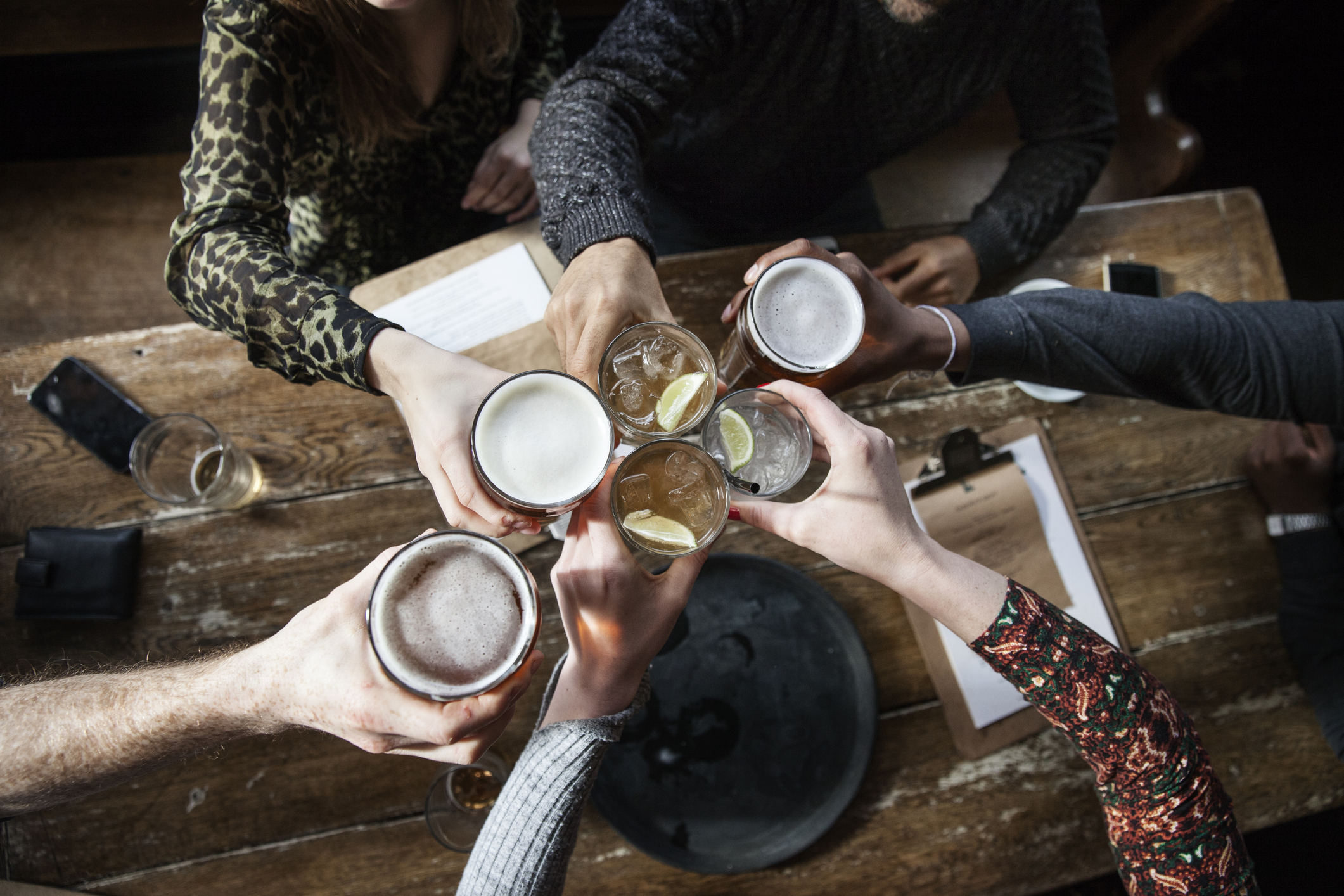 |
|
History Suggests the Impact of Not Drinking Can Reach Far Beyond ‘Dry January’

As February looms, it’s worth considering whether New Year’s resolutions extend beyond self-improvement. A resolution such as “Dry January,” attempting to quit drinking for a month (or more), while initially driven by health concerns, can have broader cultural, economic, and political implications. In fact, we can learn much from early 19th-century choices about alcohol, which spawned a mass movement that reshaped both taverns—the precursors of our modern bars, hotels, and restaurants—and American politics.
By 1830, the nation’s average per capita alcohol intake had surged to a staggering 7.1 gallons of pure alcohol for every person aged 15 and older. Long part of everyday life, drinking had expanded sharply, fueled by cheap whiskey and unsettling economic and social changes associated with early industrialization, urbanization, and migration. American taverns became notorious for pouring whiskey by the half-pint, pint, quart, and even gallon, with larger volumes primarily intended for home consumption.
Read More: The Origins of Dry January
Not everyone, however, drowned in the flood of whiskey. As concerns mounted about alcohol abuse’s rippling impacts on men, women, family life, and more, some people opted for moderation or restricted themselves to fermented wine and beer—avoiding distilled spirits.
Temperate Americans could still be tavern-goers, however, and some tavern keepers found ways to profit from their patrons’ diverse preferences. In the small towns, villages, and rural communities where most Americans lived in the first half of the 19th century, many taverns served not just as bars, but also as eateries, short-term lodgings, libraries, post offices, general stores, and all-purpose spaces for business dealings, entertainment, and community organizing. Major Porter’s tavern in Hartford, Conn., provided temporary lodgings for state legislators, demonstrated a new spinning wheel—women were invited to see for themselves the “work and amusement” it might provide them—and hosted auctions of valuable merino sheep. From New Hampshire to Alabama, town and village taverns hosted lessons in the latest fashionable dances, theatrical performances, and meetings of local medical, bible, or agricultural societies.
Because of these many functions, many taverns welcomed diverse crowds, as English immigrant Fortescue Cuming noted in 1807: prosperous leisure travelers, lawyers and judges “riding circuit,” farmers traveling to market, peddlers bringing city wares to the countryside, and migrants. These different customers often had different drinking habits. Tavern account books confirm that some customers drank only whiskey, others preferred lower-alcohol cider or ale, and still others chose expensive imports and mixed drinks, such as Madeira wine, toddy, and sling. A sliver of small-town and rural customers came not for alcohol but for foodstuffs or other goods. To appeal to customers who, for various reasons, disliked mingling with barroom patrons, some tavern keepers began to offer public parlors and even private sitting rooms to those who could afford them.
Read More: How to Be a Healthier Drinker
All this worked for white patrons, but Black Americans were rarely welcome in these more refined spaces, when they were allowed to patronize taverns and hotels at all. Frederick Douglass repeatedly observed that white Americans refused to share hotel parlors and dining rooms with him, yet in England, “no one is offended” at his presence.
Even without a parlor, an attentive tavern keeper could sometimes keep his drinking and non-drinking customers reasonably content under the same roof. When New Jersey widow Elizabeth Willson traveled with her son’s family to Ohio in the mid-1830s, she was sometimes “much annoyed” by “young men who had made too free with the glass.” But one keeper who lacked a parlor nonetheless ensured that an “intoxicated” customer “knew his place,” namely, away from Willson and her party.
By the 1830s, in fact, temperate customers had become numerous enough that some tavern keepers began operating on what became known as “the temperance plan.” These keepers offered the usual opportunities for socializing, lodging, and engagement while selling only beer and wine, like S. B. Miller of Sandyville, Ohio, or, increasingly, without selling any alcohol at all.
This move towards temperance taverns reflected the growing temperance market and the overall diversification of public accommodations in the period. It also reflected the evolving goals of temperance itself.
In 1826, Presbyterian minister Lyman Beecher began preaching that alcohol was a “river of fire” threatening “our experiment of civil liberty.” The American Temperance Society, organized on the principle of total abstinence around the same time, soon claimed over a million members. In the early 1840s, Washington Societies made great inroads into working-class communities with their focus on helping alcoholics, most of them men. This phase of the temperance movement contributed to an estimated 75% decline in overall American drinking from 1830 to 1845.

Despite the astonishing decline in alcohol consumption and keepers’ efforts to accommodate temperate patrons, the anti-alcohol movement turned to legislative measures to reduce drinking still further. In state after state, temperance women and men engaged in successful campaigns to circulate petitions, elect supportive legislators, and pass laws allowing local prohibition or requiring it statewide. For women, activism for temperance and other causes, including anti-slavery, significantly expanded their political influence notwithstanding their disenfranchised status.
Read More: Synthetic Alcohol Promises to Make Drinking Safer. But Experts Are Wary
Temperance activism often involved troubling assumptions, however. The Protestant-inflected movement had little patience with men who refused to surrender their beer and whiskey, especially if they were working-class and even more if they were German or Irish Catholic immigrants. In the mid-1850s, temperance, anti-immigrant, and anti-Catholic sentiment fused to create the short-lived Know-Nothing Party.
Simultaneously, some Americans argued that anti-alcohol laws violated the drinking minority’s rights. Their opposition led to frequent revisions in temperance laws across the states and loaned ammunition to pro-slavery minority rights reasoning.
To this day, an important strand of American politics owes something to this generation’s determination to advance—and resist—reforms that curbed men’s social prerogatives and business freedoms, with or without democratic majorities.

Reflecting on the first wave of the American temperance movement offers both lessons and cautions. In the early 19th century, the demands of moderate and non-drinking tavern patrons fed entrepreneurial creativity in the nascent hospitality sector, and the rapid expansion of “non-alcoholic,” dealcoholized, and zero-proof beverages suggests a modern parallel.
Early temperance activism mobilized thousands of citizens, contributing to the expansion of democratic participation even as it divided American voters. Perhaps the shared affinities for moderation and abstinence that drove early temperance societies may again fuel sustaining forms of political engagement while promoting inclusive social transformations that 19th-century reformers never imagined. Despite considerable progress, the democratizing process remains incomplete, making the links between personal choices and mass movements as important as ever.
Kirsten E. Wood is an associate professor of history at Florida International University and the author of Accommodating the Republic: Taverns in the Early United States and Masterful Women: Slaveholding Widows from the American Revolution through the Civil War.
Made by History takes readers beyond the headlines with articles written and edited by professional historians. Learn more about Made by History at TIME here. Opinions expressed do not necessarily reflect the views of TIME editors.
MORE MUST-READS FROM TIME
- East Palestine, One Year After Train Derailment
- The Closers: 18 People Working to End the Racial Wealth Gap
- Issa Rae and Hollywood’s Unkept Promises
- Your Brain Doesn’t Want You to Exercise
- Column: Biden’s Gaza Strategy Is an Illogical Disaster
- The 5 Best New TV Shows of January 2024
- Taylor Swift Is TIME's 2023 Person of the Year
- Want Weekly Recs on What to Watch, Read, and More? Sign Up for Worth Your Time
WRITE TO KIRSTEN E. WOOD / MADE BY HISTORY AT MADEBYHISTORY@TIME.COM





No comments:
Post a Comment